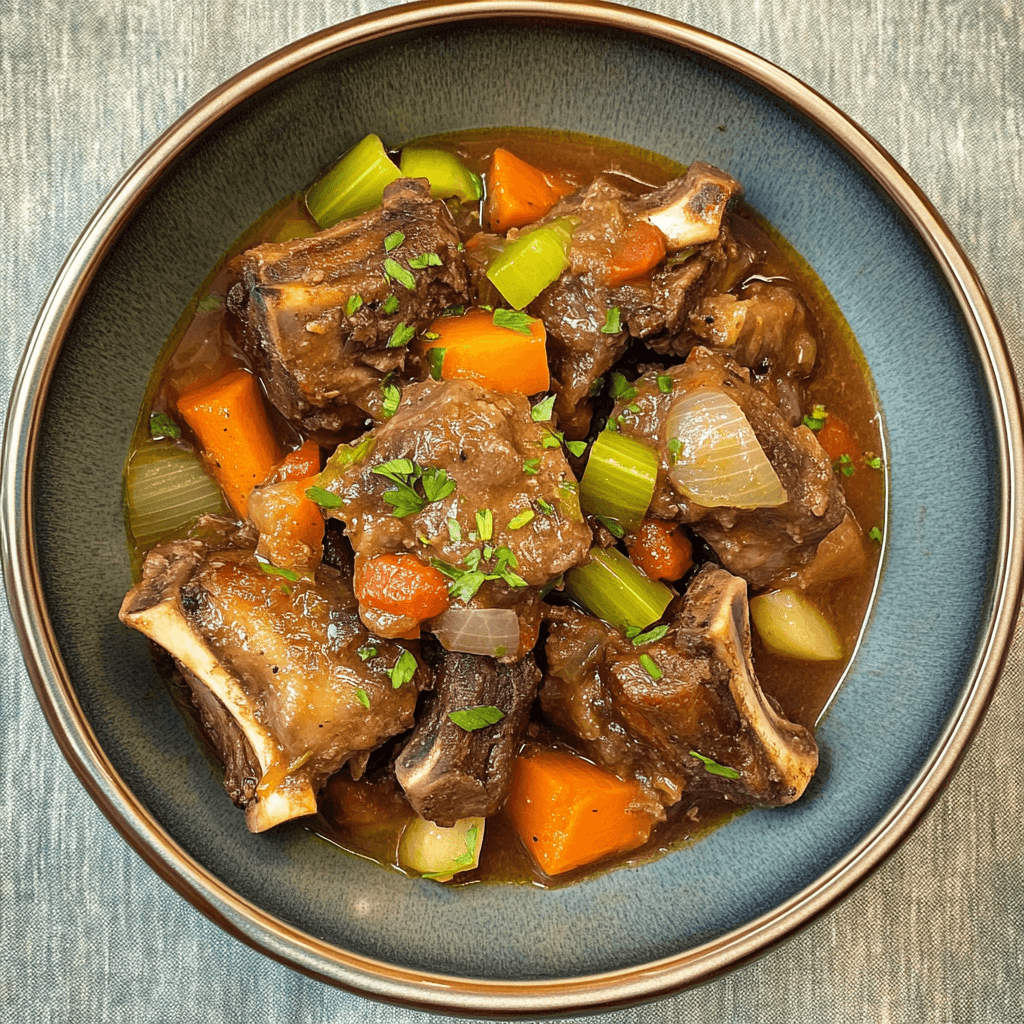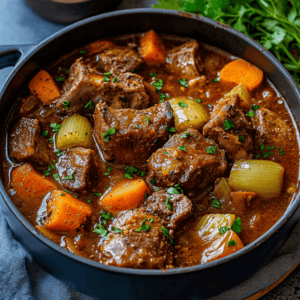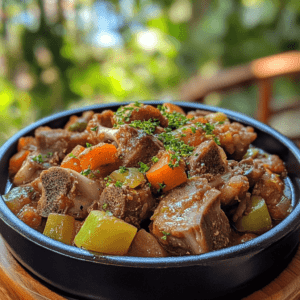Neck bones, whether pork, beef, or another variety, hold a special place in many kitchens worldwide. Known for their rich flavor and versatility, they are often used to create comforting, hearty meals. However, one question continues to perplex home cooks and professional chefs alike: Do you have to wash neck bones before cooking?
This guide delves deep into this common culinary query, exploring whether washing neck bones is necessary, the best practices for preparing them, and cultural perspectives on meat-cleaning traditions.
Introduction: Understanding Neck Bones in Culinary Practices
Neck bones are a staple ingredient in many cuisines around the world, valued for their affordability and rich flavor. They are a versatile addition to soups, stews, gravies, and other hearty dishes, making them a favorite choice for creating comforting and satisfying meals.
Proper preparation of neck bones is essential for both safety and optimal flavor. Cleaning them thoroughly and cooking them with care enhances their texture and brings out their deep, savory taste. With the right techniques, neck bones can transform simple recipes into flavorful, nutrient-packed dishes.
What Are Neck Bones? A Brief Overview
Types of Neck Bones: Pork, Beef, and Others
Neck bones, commonly sourced from pigs, cows, or other animals, are made up of small bones surrounded by tender meat and connective tissue. This combination makes them a flavorful and versatile ingredient for a variety of dishes.
The marbling in the meat—a distribution of fat within the muscle—enhances its rich, robust flavor, making neck bones a popular choice for slow-cooked recipes like stews, soups, and braises. Their unique texture and taste offer both depth and heartiness to any meal.
Nutritional Value of Neck Bones
Neck bones are a nutritional powerhouse, packed with protein, collagen, and essential minerals. Not only do they add rich flavor to dishes, but they also provide numerous health benefits, supporting joint health, skin elasticity, and overall well-being.
One of their standout features is their ability to naturally thicken broths. As they cook, the collagen breaks down into gelatin, giving soups and stews a hearty, velvety texture. This makes neck bones a prized ingredient for creating flavorful and nourishing meals.
Common Dishes Made with Neck Bones
From classic Southern-style neck bone gravy to flavorful Asian soups, neck bones are celebrated for their versatility in global cuisines. Their rich flavor and tender meat make them a key ingredient in a wide variety of dishes, ranging from hearty stews to delicate broths.
No matter the culinary tradition, neck bones add depth and character to recipes, showcasing their adaptability and universal appeal. Their ability to complement diverse spices and seasonings makes them a favorite for home cooks and chefs alike.
Why Washing Neck Bones Is a Common Concern
Traditional Cooking Habits and Hygiene Practices
Many home cooks choose to wash meat, including neck bones, as part of their preparation process. This practice is often rooted in habit or cultural traditions and stems from the desire to remove any visible dirt, bone fragments, or residue from the surface.
While rinsing meat can help improve its appearance, it’s important to handle raw meat carefully to prevent the spread of bacteria. Proper cooking techniques are ultimately the most effective way to ensure food safety, as high heat eliminates harmful pathogens.
The Role of Washing in Food Safety
While washing meat, including neck bones, can help remove visible debris or bone fragments, it is not effective in eliminating harmful bacteria. In fact, rinsing meat can sometimes spread bacteria to kitchen surfaces, increasing the risk of cross-contamination.
The most reliable way to ensure food safety is to cook meat to the proper internal temperature. High heat effectively destroys harmful pathogens, making thorough cooking a crucial step in preparing safe and healthy meals.
Common Misconceptions About Cleaning Neck Bones
Some people wash meat, including neck bones, because they believe it enhances flavor or removes “impurities” that might affect the quality of the dish. This practice is often tied to personal preferences or cultural traditions and provides a sense of reassurance to the cook.
However, these beliefs are more about perception than scientific evidence. Proper cooking, rather than washing, is what ensures safety and brings out the best flavors in the meat. While washing may feel like an essential step, it is the cooking process that truly determines the dish’s quality.
Step-by-Step Guide: How to Wash Neck Bones Properly
Tools and Ingredients Needed for Washing
- To prepare neck bones for cooking, you will need the following items:
- A colander or strainer: For rinsing and draining the neck bones effectively.
- Clean water: To wash away any visible debris or residue.
- Optional: Vinegar or salt for soaking: Some cooks prefer to soak neck bones in a mixture of water and vinegar or salt. This step can help remove any odors and provide an extra layer of cleaning, although it is not essential.
These tools and ingredients ensure the neck bones are clean and ready for your recipe.
Detailed Instructions for Cleaning Neck Bones
- Place the neck bones in a colander to allow easy handling and drainage.
- Rinse the neck bones under cold running water, scrubbing gently with your hands to remove any visible debris or bone fragments.
- (Optional) Soak the neck bones in a solution of water and vinegar or water and salt for 10-15 minutes. This can help neutralize any odors and provide additional cleaning.
- Rinse the neck bones thoroughly under cold water to remove any residue from the soaking solution.
Your neck bones are now clean and ready to use in your recipe!
When Not to Wash: Exceptions and Considerations
If neck bones are sourced from a trusted butcher and already appear clean, rinsing may not be necessary. High-quality cuts from reputable sources are typically handled and processed with care, reducing the need for additional cleaning.
However, regardless of whether you choose to rinse, it’s essential to prioritize proper cooking techniques. Cooking meat to the correct internal temperature is the most effective way to ensure safety, as it eliminates harmful bacteria and ensures a flavorful, safe dish.
Do You Have to Wash Neck Bones Before Cooking? Expert Opinions
What Professional Chefs Say About Washing Neck Bones
Many chefs highlight that washing neck bones is largely a matter of personal preference or cultural tradition. While some people feel more comfortable rinsing their meat, others may skip this step if the neck bones are sourced from a trusted supplier and appear clean.
What’s universally agreed upon, however, is that proper cooking is far more critical for ensuring food safety. Cooking meat to the correct internal temperature effectively eliminates harmful bacteria, making it the most important step in preparing safe and delicious dishes.
Insights from Food Safety Authorities
The USDA advises against washing raw meat, including neck bones, because the process can spread bacteria to nearby surfaces, utensils, and other foods through splashing. This increases the risk of cross-contamination in the kitchen.
Instead, the safest approach is to focus on cooking meat thoroughly to the proper internal temperature. Proper cooking effectively kills harmful bacteria, ensuring the meat is safe to eat while preserving its flavor and texture. Following these guidelines helps maintain a clean and safe cooking environment.
Alternative Methods for Cleaning Neck Bones
Brining as an Alternative Cleaning Method
Soaking neck bones in a brine solution is an effective method to clean and tenderize them at the same time. The brine, typically made with water and salt, helps to remove impurities while infusing the meat with moisture and subtle seasoning.
This process not only enhances the flavor of the neck bones but also improves their texture, making them more tender and succulent when cooked. Brining is a simple yet impactful step that can elevate the quality of your dish.
Parboiling: A Time-Saving Technique
Parboiling neck bones for a few minutes is an effective way to remove impurities such as blood, excess fat, and bone fragments. This quick boiling process helps ensure cleaner neck bones and sets the stage for further cooking.
Once parboiled, the neck bones can be rinsed under cold water and are ready to be incorporated into your recipe. This extra step can enhance the overall flavor and appearance of your final dish.
The Risks of Skipping Washing
Potential Contaminants in Raw Neck Bones
Unwashed neck bones may have visible debris or small bone fragments that could impact the quality of your dish. These residues can alter the texture and appearance of the final meal, making it less appealing.
Taking the time to rinse or clean the neck bones before cooking helps ensure a cleaner, more polished result, allowing the flavors and textures of the dish to shine through.
How Unwashed Bones Affect Taste and Texture
While skipping the washing step is unlikely to cause harm if the neck bones are cooked properly, it may affect the presentation or flavor of the dish. Residual debris or bone fragments can create an unappealing appearance and slightly alter the taste.
For a cleaner and more refined result, rinsing the neck bones before cooking can help enhance the overall quality of your dish without compromising safety.
Cultural Perspectives on Washing Meat
Global Practices: How Different Cultures Handle Meat Cleaning
In many cultures, washing meat is a customary practice deeply rooted in tradition and personal preference. For instance, in Caribbean cooking, it is common to use vinegar, lime, or lemon juice to clean and freshen meat before cooking.
This process is believed to remove odors, enhance flavor, and prepare the meat for seasoning. While not essential for safety, these cultural practices highlight the diverse approaches to food preparation around the world.
Religious and Ethical Considerations
Some religious dietary laws place a strong emphasis on cleanliness, which significantly influences how meat is prepared. For example, in certain traditions, meat must be thoroughly cleaned or ritually washed to meet specific spiritual or dietary requirements.
These practices often stem from religious teachings that prioritize purity and adherence to tradition, shaping the way food is handled and cooked within those communities. Such guidelines reflect the cultural and spiritual values tied to food preparation.
FAQs About Washing Neck Bones
Should neck bones be rinsed in vinegar or saltwater?
Yes, soaking neck bones in a solution of vinegar or saltwater is a common practice used to clean and tenderize them. This method helps remove any residual odors, impurities, or debris while also softening the meat slightly.
The vinegar or saltwater soak not only enhances the cleanliness of the neck bones but can also contribute to improved flavor and texture in the final dish, making it a preferred step in many traditional cooking methods.
Can I cook neck bones without washing?
Yes, washing neck bones is optional as long as they are cooked to a safe internal temperature. Proper cooking effectively eliminates harmful bacteria, ensuring the meat is safe to eat.
While some people choose to rinse for personal or cultural reasons, the most important step for food safety is thorough cooking, which guarantees both safety and great flavor.
Does washing neck bones remove nutrients?
Washing neck bones does not significantly affect their nutritional value. The nutrients, such as protein, collagen, and minerals, remain intact regardless of whether the bones are rinsed before cooking.
The primary purpose of washing is to remove visible debris or bone fragments, but it does not alter the core nutritional benefits provided by neck bones. Cooking methods and preparation techniques have a greater impact on nutrient retention and overall quality.
How long should I soak neck bones before cooking?
If desired, soak the neck bones in water, vinegar, or a saltwater solution for 10–15 minutes to help clean and tenderize them. After soaking, be sure to rinse them thoroughly under cold running water to remove any residue from the soaking solution. This ensures the neck bones are clean and ready for cooking.
Is it safe to eat neck bones without washing?
Cooking neck bones thoroughly ensures they are safe to eat, regardless of whether they were washed beforehand. Proper cooking to the appropriate internal temperature effectively eliminates harmful bacteria, making washing a matter of personal preference rather than a necessity for safety.
What is the best way to ensure neck bones are safe for consumption?
To minimize risks, prioritize proper storage, handling, and cooking of neck bones. Store them at the correct temperature, handle them with clean utensils to avoid cross-contamination, and cook them thoroughly to ensure safety. These steps are far more effective in reducing risks than washing the meat.
Conclusion: To Wash or Not to Wash? Final Thoughts
Whether you choose to wash neck bones before cooking ultimately depends on personal preference and cultural practices. While washing may remove visible debris, it does little to ensure safety compared to proper cooking methods. By understanding the nuances of preparing neck bones, you can make an informed decision that suits your needs and enhances your culinary creations.
Related Article: How Long Does Beef Broth Last in the Fridge?



